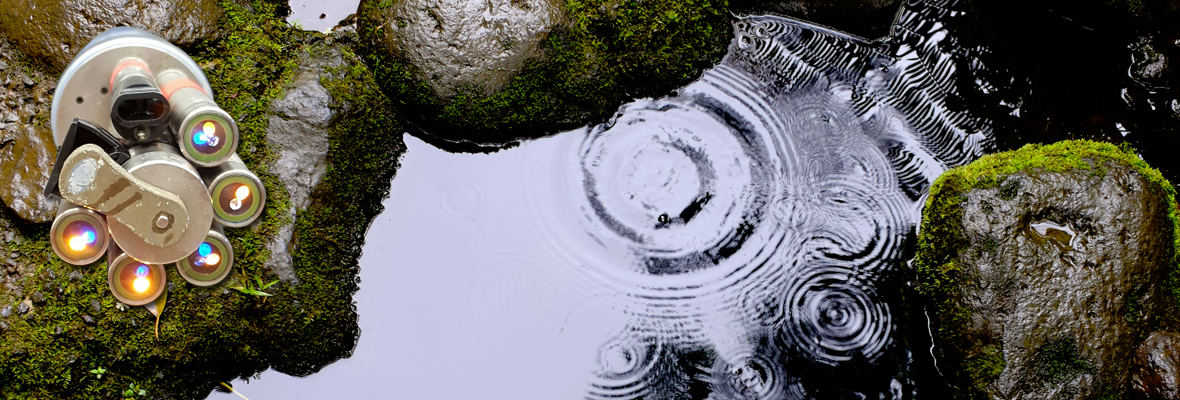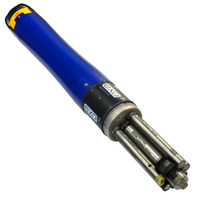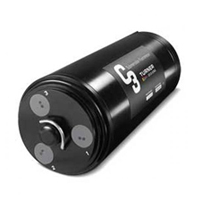Water managers and other decision-makers must generate water quality sensor data to engage in a range of water management issues. Some of these include: implementing contamination warning systems; establishing compliance with water quality regulations; hydrant flushing; identifying water quality at important points throughout the system and for essential users; and verifying water quality models.
The proper water quality sensor options depend heavily on what the water quality data will look like for your project. In this post, we describe some of the reasons to use water quality sensors, and how some of the sensor options work.
Water Quality Sensor Options: The Right Tool For the Job
Water quality sensors allow managers to monitor for algae, phytoplankton, and chlorophyll; chromophoric dissolved matter (CDOM); conductivity, salinity, and total dissolved solids; dissolved oxygen; nutrients such as nitrogen (both ammonia and nitrate) and phosphorus; pH; photosynthetically active radiation and solar radiation; temperature; and turbidity, clarity, and total suspended solids. Which of these parameters matters to you determines which water quality sensor options are viable for the project.
Monitoring for algae, phytoplankton, and chlorophyll
It is very difficult to measure algae and phytoplankton in the water directly; therefore, it is far more efficient and simpler to monitor these parameters with a chlorophyll sensor in-situ. This technique works because algae and phytoplankton contain chlorophyll A.
YSI EXO-series water quality sondes can measure total algae (chlorophyll and blue-green algae), along with dissolved oxygen, and turbidity. This compact instrument fits into the standard 4-inch well, and features wiped optics. For more extended deployments, the YSI EXOs can integrate with NexSens real-time data logging systems.
This kind of tool can be used for snapshot production of data, as well as continuous or long-term recording and monitoring of chlorophyll.
Monitoring for chromophoric dissolved organic matter (CDOM)
You can monitor for chromophoric dissolved organic matter (CDOM) using a spectrophotometer to analyze your water samples in a lab, or in-situ using a water quality sonde with a specialized sensor or a fluorometer. Hand or “spot sampling” works, as does sampling from a larger, on-site unit.
Fluorometers measure parameters related to fluorescence, such as the distribution and intensity of the wavelengths of emission spectra observed after excitation. Sensing probes identify the presence and number of molecules in water and can detect CDOM between 0 to 1250 parts per billion.
Adding the right probe to some multi-parameter water quality sondes can enable the instrument to detect CDOM. If that’s not possible for some reason or with your equipment, it’s possible to track fluorescent dissolved organic matter with a sensing probe, and that parameter can function as a surrogate for CDOM.
The Turner Designs C3 Submersible Fluorometer is a great water quality sensor option that is ideal for monitoring CDOM. The Turner Designs C3 can incorporate up to three optical sensors, allowing you to detect from infrared to ultraviolet. This instrument works well on unattended deployments thanks to its internal memory; it also has an optional lithium battery. The unit is depth rated to 600 meters, and also features a temperature sensor, and optional mechanical wiper and depth sensor.
Monitoring for conductivity, salinity, and total dissolved solids
Conductivity measures how easily electrical flow can pass through water, and it is directly related to that water’s ion concentration. Compounds dissolve into ions or electrolytes from salts and inorganic materials such as chlorides, alkalis, carbonate compounds, and sulfides. More electrolytes mean higher conductivity and vice versa. Distilled water has been deionized, so its conductivity is low, if not negligible, allowing it to function as an insulator. In contrast, seawater has a high conductivity as you’d expect due to the high levels of salts dissolved in it.
Among the most frequently monitored and most useful water quality parameters, conductivity provides the basis for most total dissolved solids (TDS) calculations as well as salinity measurements (called “practical salinity” measurements when derived from conductivity values). Conductivity also serves as an early warning for a water system that’s changing, whether it is human-driven or natural changes that are causing the fluctuations to water quality.
Salinity is critical to water quality because of its connection to dissolved oxygen solubility. Salinity levels are inversely proportional to dissolved oxygen concentration. This is because oxygen is around 20 percent less soluble in seawater, so freshwater sources that are the same temperature are likely to have higher DO concentrations.
As far as actual metrics for total dissolved solids (TDS) go, all ion particles less than 0.0002 centimeters (or 2 microns) in size count. This includes whatever electrolytes are being counted in the salinity concentration, but also dissolved organic matter and other compounds. Salinity and TDS should be approximately equal in water that is “clean,” but TDS can also include hydrocarbons, urea, and other organic solutes along with salt ions in polluted water or wastewater.
There are many reasons to monitor TDS levels directly. Some water quality standards promulgated by certain agencies, localities, regions, and states set a TDS maximum rather than a conductivity limit. For example, most freshwater sources should have 2,000 mg/L or less of total dissolved solids—in most cases, much less. Excessively high TDS levels can be toxic to fish and other aquatic life, and can also affect the taste of water.
Water Quality Sensor Options: The Bottom Line
There are multiple excellent water quality sensor options out there, but without the right blend of parameter-monitoring capability and telemetry options, your project won’t have the support it needs. The X2 data logger and the iSIC V2 data logger are compatible with most industry water quality sensor options on the market. Supported outputs include SDI-12, RS-232, RS-485, and analog. If you’re not sure about integrating the third party sensors that are right for your application, reach out to the NexSens/Fondriest team for guidance.
Equipment
The YSI EXO represents the next generation of water quality instruments from YSI. The EXO2 sonde includes six sensor ports and a central anti-fouling wiper option.
The Turner Designs C3 Submersible Fluorometer is designed to incorporate up to three optical sensors ranging from the ultraviolet to the infrared spectrum.
WQData LIVE is a web-based project management service that allows users 24/7 instant access to data collected from remote telemetry systems.





Dear,
We need a system for measuring sea water quality, pH sensors, dissolved oxygen, conductivity and turbidity. Battery powered and transmitted from a LoRa radio.
Can you suggest a technical solution and give us a price.
Best regards
Hello Gordan! If you do not hear from us in the next week please give Paul Neiberding a call at 937-426-2151. We have many solutions for this type of application and we would be happy to assist!